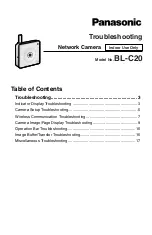
Publication date: Jan, 2009
Revision A1
280
Diagnostic LED:
System LED :
PWR
CPU
ACT
(LEDSET)
FDX
(LEDSET)
SPD
(LEDSET)
Per Port LED:
10/100M TP Port 1 to 8
: LINK/ACT, FDX, SPD
1000M Fiber/TP Port 9,10
: LINK/ACT, FDX, SPD
Power Requirement :
AC Line
Voltage : 100
∼
240 V
Frequency : 50
∼
60 Hz
Consumption : 15W
Ambient Temperature
:
0
°
to 40
°
C
Humidity
:
5% to 90%
Dimensions
: 44(H)
×
220(W)
×
130.5(D) mm
Comply with FCC Part 15 Class A & CE Mark Approval
Management Software Specifications
System Configuration
Auto-negotiation support on 10/100Base-TX ports,
Web browser or console interface can set transmission
speed (10/100Mbps) and operation mode (Full/Half
duplex) on each port, enable/disable any port, set
VLAN group, set Trunk Connection.
Management Agent
SNMP support; MIB II, Bridge MIB, RMON MIB
Spanning Tree Algorithm
IEEE 802.1D
VLAN Function
Port-Base / 802.1Q-Tagged, allowed up to 256 active
VLANs in one switch.
Trunk Function
Ports trunk connections allowed
IGMP
IP Multicast Filtering by passively snooping
on the IGMP Query.
Bandwidth Control
Supports by-port Egress/Ingress rate control
Quality of Service (QoS)
Referred as Class of Service (CoS) by the
IEEE 802.1P standard
Four queues per port
Packet transmission schedule using Weighted
Round Robin (WRR)
User-defined weight
Classification of packet priority can be based on
either a VLAN tag on packet or a user-defined
port priority.
Port Security
Limit number of MAC addresses learned per
port static MAC addresses stay in the filtering table.
Internetworking Protocol
Bridging : 802.1D Spanning Tree
IP Multicast : IGMP Snooping
IP Multicast Packet Filtering
Maximum of 256 active VLANs
and IP multicast sessions
Network Management
One RS-232 port as local control console
Telnet remote control console
SNMP agent : MIB-2 (RFC 1213)
Bridge MIB (RFC 1493)
RMON MIB (RFC 1757)-statistics
Ethernet-like MIB (RFC 1643)
Web browser support based on HTTP Server
and CGI parser TFTP software-upgrade capability.




































